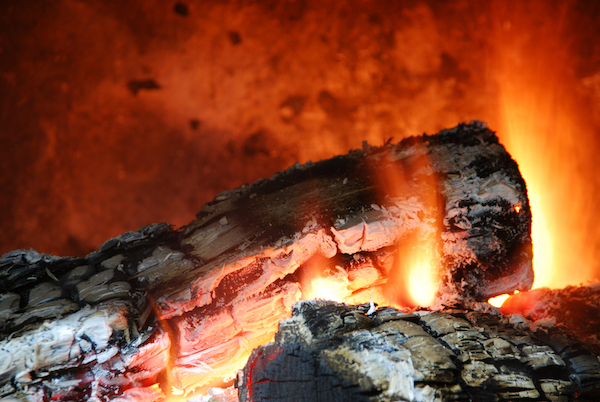Every year, at least 12,000 Americans die in residential fires, according to statistics from the National Fire Protection Association. Because of the risks associated with fires, it's important to understand and practice safety tips when using indoor fireplaces and woodburning stoves this winter.
Prepare the Fireplace for Use
Put a shield around the fireplace to prevent sparks from flying out and starting a fire. Glass grates, which enclose the fireplace entirely, are the most effective. Wire mesh grates, though not as impenetrable, also stop most sparks. Make sure the fireplace draws properly so smoke doesn't blow back into the living area.
To guard against fire in case ash, sparks or smoke escape the fireplace, make sure the area surrounding the fireplace is clear of flammable items, including carpet. The best hearths are made of non-combustible brick or linoleum.
Clean fireplaces, woodburning heaters and stove pipes regularly. Ash or creosote build-up in the flue or pipes can catch fire if the build-up has accumulated over time and the fire temperature is hot. Eliminate creosote by burning big, hot fires instead of small, smoky or wet ones that lead to build-up. Hire a chimney sweep or clean the chimney flue and damps once a year with a big brush. For woodburning heaters and stove pipes, take time to clean and check for buildup and other problems or hire a chimney cleaner to do so before it gets cold.
Choose Firewood
Choose wood types depending on the type of fire desired. If a fireplace is for aesthetic reasons, burn cottonwood, maple or elm, which create bright flames. If the fireplace is used for heat, burn harder, heavier woods such as oak and ash.
Avoid Insect Problems
Homeowners may unwittingly bring insects into their home along with firewood, but as long as wood is properly handled and stored, insect emergence in the home can be avoided. If wood is kept below 50 degrees, insects living in it will remain dormant. However, if taken indoors and allowed to warm up, insect activity resumes and they may emerge in the home. Emerging insects can then move out of the firewood, wander into the rest of the house and become a nuisance.
The best way to avoid invasion is to store the wood outside in the cold until it's ready to be burned so insects don't have a chance to warm up and become active. Store wood away from the house and under a cover, such as in a woodshed, unheated garage, utility building or under a sheet of plastic or sheet metal roofing to keep it dry. Leave an air space between the wood and covering.
Splitting, sawing and stacking wood in loose piles raised off the ground accelerates drying. Few insects will survive if wood is dried quickly and is kept dry. Do not spray firewood with pesticides. Storing wood outside until you are ready to use it will prevent insect problems indoors.
If firewood insects, such as bark beetles, ambrosia beetles and both roundheaded and flatheaded wood borers, do emerge indoors they are not likely to attack wood in the home. Simply vaccum them up.
Correctly manage woodburning stoves or heaters. Often, fires from woodburning stoves start when the residents are gone or asleep. To guard against this, adjust the air intake vents before leaving the stove alone. Don't leave woodburning stoves alone unless the heater can be prepared for an amount of unsupervised time.
